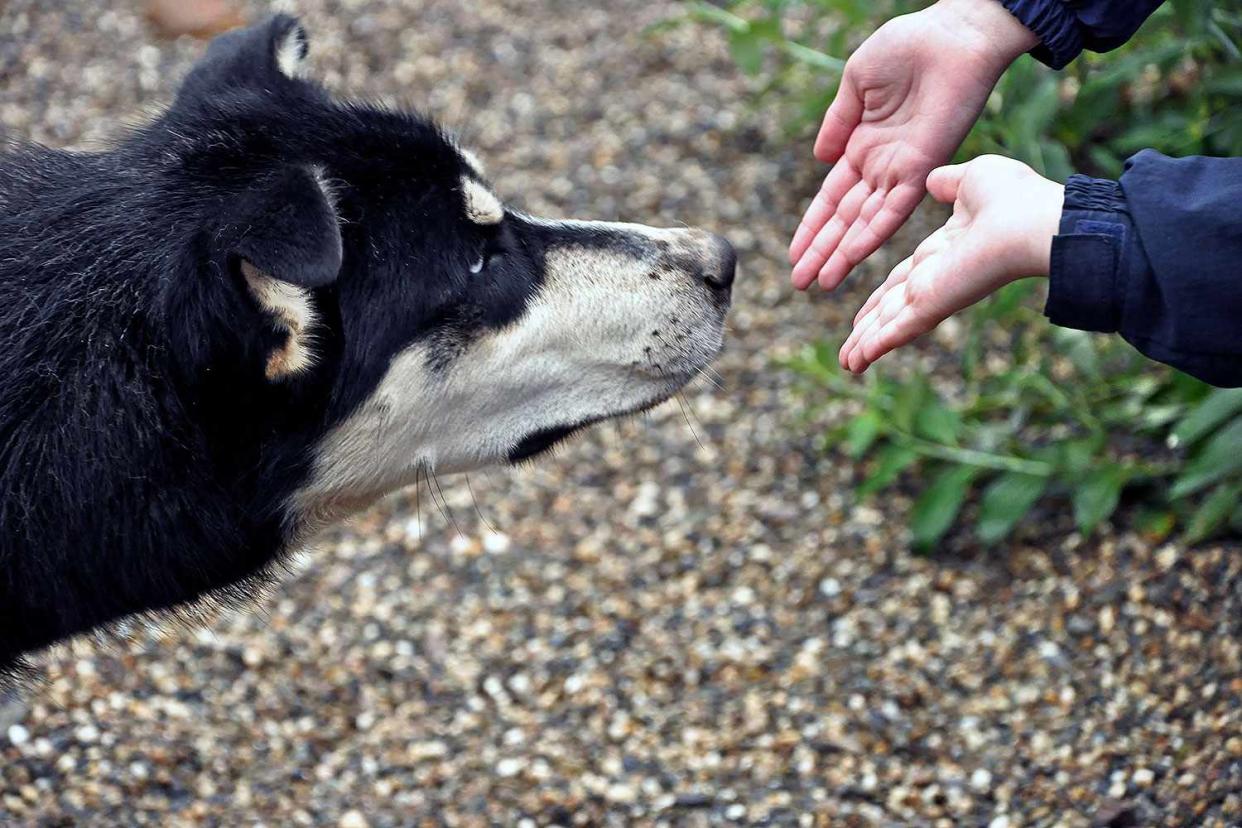Extending Your Hand for 'The Sniff Test' Is Not the Way to Introduce Yourself to a New Dog

Getty
Many learn, one way or another, that when you meet a new dog, the correct way to introduce yourself is by extending your hand towards the dog's face and letting the pup sniff you.
"In the human culture, extending a hand to someone we just met means a sign of friendship, so naturally we do it with dogs when we first meet them," Tamar Geller, a dog trainer with A-list clients like Ben Affleck, Lady Gaga, Reese Witherspoon, and their canines, told PEOPLE. But this introduction often called "The Sniff Test", Geller noted, is not the way to go when meeting a new pooch.
Many more are starting to realize this thanks to a viral Facebook post from Eureka Dog Services, a dog training company. In a detailed post from August 9, which went on to get over 67,000 shares, Eureka Dog Services asks readers to use their manners and to stop doing "The Sniff Test" when approaching new dogs because the test is "a badly ingrained habit that society has been taught, without a clear understanding of what they're actually doing."
The post goes on to list the reasons why "The Sniff Test" is the wrong approach, including that the gesture is not usually matched with permission from the dog's owner to approach the pet and that it is easy for canines to feel cornered and threatened by the body posture, which often involves walking up to a dog and extending a hand towards their face.
Geller, who offers her dog training services through her site The Loved Dog and can also be found on Instagram @TheLovedDog, agrees that "The Sniff Test" is not the way to approach a new pup.
RELATED: We Tried Virtual Dog Training for a New Pup
"Dogs can get scared when someone is reaching towards them with their hand, and I would not advise doing that unless they are holding a super yummy treat to send the message that they are a source of pleasure. Having a treat and offering it to the dog, even just tossing it to them (without looking directly at them) is an awesome gesture of friendship," Geller says.
She added that the most important step before approaching a dog you've never met is asking for permission to touch the dog, even if you think "all dogs love me," because each pooch is unique and has their own comfort level with strangers and handling.
"The doggie may not be comfortable with being touched by strangers, and will react in one of three ways: freeze, run away, or nip. All three behaviors are because of one reason: the dog was nervous to be touched by a stranger like we would be if an unfamiliar person started touching us," Gellar summarizes.
The first step in approaching a new animal should always be to ask the owner's permission to touch their pet and to listen to what the owner tells you. If you do get permission to introduce yourself to a new dog, Gellar recommends taking things slow and focusing on your body language.
"It's so much easier to communicate when you know the other's language, and in this case, the doggie's language is based on body posture and facial expressions. The right thing to do is to turn your body and your face away at a 45-degree angle and smile," Gellar says.
"A dog naturally knows that he can't become prey to someone who is not looking at him. With that information, and feeling a bit safer, a dog can start investigating the new person that came into their space," she adds. "They may do what I call 'rubber band legs' where they stretch their body forward while leaving their back legs in the same spot, so if something goes wrong, they could quickly get back like a rubber band."
RELATED: Study Finds a Dog Year Doesn't Equal 7 Human Years, Makes Graph to Learn Your Dog's True Age
It is also up to dog owners to take control of the situations when their pets are meeting new people, and Gellar has advice for them as well.
"As a dog behavior expert, I ask my clients to have special treats each time the dog encounters a stranger. I also ask them to ask the stranger to NOT touch their doggie, until the "paw"rent smiles and gives a treat to the doggie while saying the word 'frieeeeend' in a sing-song tone of voice, to help the dog associate the situation with pleasure," Gellar shares. "Once the dog is more relaxed, I would give the treat to the stranger and ask them to toss the treat to the doggie, while looking away at a 45-degree angle. Make sure to let the doggie go to the stranger, and not let them go to the doggie first. Shortly after, with most dogs, there is a super happy interaction between the dog and the stranger."

